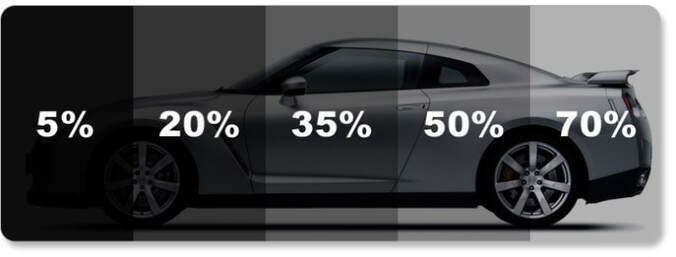Table of Content:
What Do Window Tint Percentages Mean?
Window tint percentages refer to Visible Light Transmission (VLT), which is the amount of light that passes through your windows. The lower the percentage, the darker the tint. For example, 20% tint allows only 20% of visible light through, making it much darker, while 35% tint allows 35% of light, creating a lighter but still noticeable shade. Understanding these numbers helps drivers choose the right types of car tint for style, comfort, and compliance with local laws.

Is 20% or 35% Window Tint Darker?
The simple answer is that 20% window tint is darker than 35%. A car with 20% tint has a sleek, bold appearance with strong privacy but reduced visibility at night. On the other hand, 35% tint provides moderate shading that balances aesthetics and clarity, making it easier for night driving while still reducing glare and UV exposure.
Comparing 20% Tint vs 35% Tint on Cars
Different Types of Window Tint Available for Cars
Window Tint Laws: Is 20% or 35% Legal in Your State?
Laws for window tint vary by state. In many regions, 35% tint is legal for front windows because it preserves visibility. 20% tint, however, is often restricted to rear passenger windows. Before deciding how much to tint car windows, always check state-specific regulations to avoid fines or removal requirements.
Modern Window Tint Solutions: Introducing UPPF Manta Window Film
Final Thoughts: Choosing the Right Car Window Tint
So, is 20% or 35% tint darker? Clearly, 20% tint provides a deeper, more private look, while 35% offers balanced shading and better visibility. The right choice depends on your driving habits, local laws, and desired style. With the right film, you’ll enjoy comfort, UV protection, and a look that matches your car perfectly.
FAQs on 20% vs 35% Window Tint
